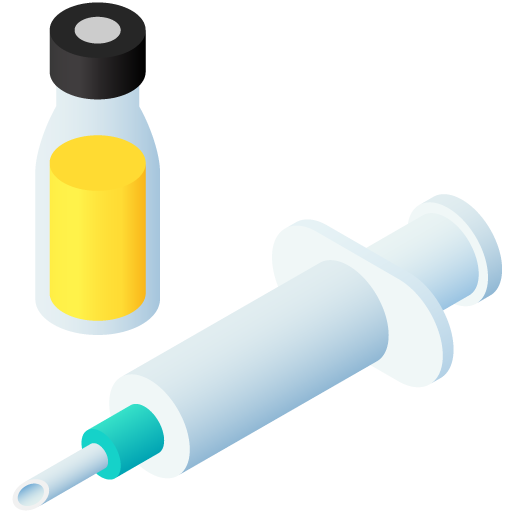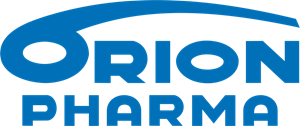Nifencol
Active substance
ATC code
Species
Cattle and pigs.
Indications
Cattle:
Metaphylaxis and treatment of respiratory tract infections in cattle due to Histophilus somni, Mannheimia haemolytica and Pasteurella multocida, susceptible to florfenicol.
The presence of the disease in the herd should be established before the product is used.
Pigs:
Treatment of acute outbreaks of respiratory disease caused by strains of Actinobacillus pleuropneumoniae and Pasteurella multocida susceptible to florfenicol.
Dose to be administered and administration route
Cattle: Intramuscular or subcutaneous injection
Pig: intramuscular injection
Cattle:
Treatment
IM route: 20 mg florfenicol /kg bodyweight (1ml of the product/15kg) to be administered twice 48 hours apart using a 16 gauge needle.
SC route: 40 mg florfenicol /kg bodyweight (2ml of the product/15kg) to be administered once only using a 16 gauge needle.
Metaphylaxis
SC route: 40 mg florfenicol/kg bodyweight (2ml of the product/15kg) to be administered once only using a 16 gauge needle.
Pigs:
15 mg florfenicol/kg bodyweight (1 ml of the product / 20 kg) by intramuscular injection twice at 48 hour intervals using a 16-gauge needle.
The dose volume given at any one injection site should not exceed 10ml for both routes of administration (intramuscular and subcutaneous) in cattle and 3 ml in pigs. The injection should only be given in the neck in both target species.
To ensure a correct dosage body weight of the animals should be determined as accurately as possible to avoid underdosing.
It is recommended to treat animals in the early stages of disease and to evaluate the response to treatment within 48 hours after the second injection. If clinical signs of respiratory disease persist 48 hours after the last injection or if relapse occurs, treatment should be changed using another formulation or another antibiotic and continued until clinical signs have resolved.
Swab septum before removing each dose. Use a dry sterile needle and syringe.
Do not broach the stopper of vial more than 25 times.
Adverse reactions
In cattle, a decrease in food consumption and transient softening of the faeces may occur during the treatment period. The treated animals recover quickly and completely upon termination of treatment.
Administration of the product by the intramuscular and subcutaneous routes may cause inflammatory lesions at injection site which persist for 14 days.
On very rare occasions, anaphylactic reactions have been reported in cattle. In pigs, commonly observed adverse effects are transient diarrhoea and/or perianal and rectal erythema/oedema which may affect 50% of the animals. These effects can be observed for one week. Under field conditions approximately 30% of treated pigs presented with pyrexia (40°C) associated with either moderate depression or moderate dyspnea a week or more after administration of the second dose.
Transient swelling lasting up to 5 days may be observed at the site of injection. Inflammatory lesions at the injection site may be seen up to 28 days.
The frequency of adverse reactions is defined using the following convention:
- very common (more than 1 in 10 animals treated displaying adverse reaction(s))
- common (more than 1 but less than 10 animals in 100 animals treated)
- uncommon (more than 1 but less than 10 animals in 1,000 animals treated)
- rare (more than 1 but less than 10 animals in 10,000 animals treated)
- very rare (less than 1 animal in 10,000 animals treated, including isolated reports).
Dispensing
POM-VSUMMARY OF PRODUCT CHARACTERISTICS 1. NAME OF THE VETERINARY MEDICINAL PRODUCT
Nifencol 300 mg/ml solution for injection for cattle and pigs
2. QUALITATIVE AND QUANTITATIVE COMPOSITION
Each ml contains:
Active substance:
Florfenicol............................................................300 mg
Excipients:
For the full list of excipients, see section 6.1.
3. PHARMACEUTICAL FORM:
Solution for injection.
Clear slightly yellowish solution.
4. CLINICAL PARTICULARS
4.1Target species
Cattle and pigs.
4.2 Indications for use, specifying the target species
Cattle:
Metaphylaxis and treatment of respiratory tract infections in cattle due to Histophilus somni, Mannheimia haemolytica and Pasteurella multocida, susceptible to florfenicol.
The presence of the disease in the herd should be established before the product is used.
Pigs:
Treatment of acute outbreaks of respiratory disease caused by strains of
Actinobacillus pleuropneumoniae and Pasteurella multocida susceptible to florfenicol.
4.3Contraindications
Do not use in adult bulls and boars intend for breeding purposes.
Do not use in cases of hypersensitivity to florfenicol or to any of the excipients.
4.4 Special warnings for each target species
None.
4.5Special precautions for use
This veterinary medicinal product does not contain an antimicrobial preservative.
Special precautions for use in animals
Do not administer to piglets of less than 2 kg.
Whenever possible, the veterinary medicinal product should be used based on susceptibility testing. Official, national and regional antimicrobial policies should be taken into account when the product is used.
Special precautions to be taken by the person administering the veterinary medicinal product to animals
Care should be taken to avoid accidental self-injection.In case of accidental self-injection, seek medical advice immediately and show the package leaflet or the label to the physician.
Avoid skin or eye contact with the product. In case of contact with the skin or eyes, rinse the affected area immediately with plenty of water. Wash the hands after use.
People with known hypersensitivity to propylene glycol or polyethylene glycols should avoid contact with the veterinary medicinal product.
4.6Adverse reactions (frequency and seriousness)
In cattle, a decrease in food consumption and transient softening of the faeces may occur during the treatment period. The treated animals recover quickly and completely upon termination of treatment.
Administration of the product by the intramuscular and subcutaneous routes may cause inflammatory lesions at injection site which persist for 14 days.
On very rare occasions, anaphylactic reactions have been reported in cattle. In pigs, commonly observed adverse effects are transient diarrhoea and/or perianal and rectal erythema/oedema which may affect 50% of the animals. These effects can be observed for one week. Under field conditions approximately 30% of treated pigs presented with pyrexia (40°C) associated with either moderate depression or moderate dyspnea a week or more after administration of the second dose.
Transient swelling lasting up to 5 days may be observed at the site of injection. Inflammatory lesions at the injection site may be seen up to 28 days.
The frequency of adverse reactions is defined using the following convention:
- very common (more than 1 in 10 animals treated displaying adverse reaction(s))
- common (more than 1 but less than 10 animals in 100 animals treated)
- uncommon (more than 1 but less than 10 animals in 1,000 animals treated)
- rare (more than 1 but less than 10 animals in 10,000 animals treated)
- very rare (less than 1 animal in 10,000 animals treated, including isolated reports).
4.7Use during pregnancy and lactation
Studies in laboratory animals have not revealed any evidence of embryo- or foetotoxic potential for Florfenicol.
Cattle:
The safety of the veterinary medicinal product has not been established during pregnancy.
Use only accordingly to the benefit/risk assessment by the responsible veterinarian.
Pig:
The safety of the veterinary medicinal product has not been established during pregnancy and lactation.
The use is not recommended in pigs during pregnancy and lactation.
4.8Interaction with other medicinal products and other forms of interaction
None known.
4.9 Amounts to be administered and administration route
Cattle: Intramuscular or subcutaneous injection Pig: intramuscular injection
Cattle:
Treatment
IM route: 20 mg florfenicol /kg bodyweight (1ml of the product/15kg) to be administered twice 48 hours apart using a 16 gauge needle.
SC route: 40 mg florfenicol /kg bodyweight (2ml of the product/15kg) to be administered once only using a 16 gauge needle.
Metaphylaxis
SC route: 40 mg florfenicol/kg bodyweight (2ml of the product/15kg) to be administered once only using a 16 gauge needle.
Pigs:
15 mg florfenicol/kg bodyweight (1 ml of the product / 20 kg) by intramuscular injection twice at 48 hour intervals using a 16-gauge needle.
The dose volume given at any one injection site should not exceed 10ml for both routes of administration (intramuscular and subcutaneous) in cattle and 3 ml in pigs. The injection should only be given in the neck in both target species.
To ensure a correct dosage body weight of the animals should be determined as accurately as possible to avoid underdosing.
It is recommended to treat animals in the early stages of disease and to evaluate the response to treatment within 48 hours after the second injection. If clinical signs of respiratory disease persist 48 hours after the last injection or if relapse occurs, treatment should be changed using another formulation or another antibiotic and continued until clinical signs have resolved.
Swab septum before removing each dose. Use a dry sterile needle and syringe.
Do not broach the stopper of vial more than 25 times.
4.10 Overdose (symptoms, emergency procedures, antidotes), if necessary
In swine, after administration of 3 times the recommended dose or more, a reduction in feeding, hydration and weight gain has been observed.
After administration of 5 times the recommended dose or more, vomiting has also been noted.
4.11 Withdrawal period
Cattle:
Meat and offal: by IM (at 20 mg/kg bodyweight, twice): 30 days by SC (at 40 mg/kg bodyweight, once): 44 days
Milk: Not authorised for use in cattle producing milk for human consumption, including during the dry period.
Pigs:
Meat and offal: 18 days
5 PHARMACOLOGICAL PROPERTIES
Pharmacotherapeutic group: Antibacterial for systemic use, amphenicols. ATC vet code: QJ01BA90
5.1 Pharmacodynamic properties
Florfenicol is a synthetic broad spectrum antibiotic effective against most Grampositive and Gram-negative isolated from domestic animals. Florfenicol acts by inhibiting protein synthesis at ribosomal level and is bacteriostatic. Laboratory tests have shown that florfenicol is active against the most commonly isolated bacterial pathogens involved in ovine and bovine respiratory disease which include Mannheimia haemolytica, Pasteurella multocida, and for cattle Histophilus somni.
Florfenicol is considered to be a bacteriostatic agent, but in vitro studies of florfenicol demonstrate bactericidal activity against Mannheimia haemolytica, Pasteurella multocida and Histophilus somni.
Mechanisms of resistance to florfenicol include specific and non-specific drugs transporters and RNA methyltransferases. In general, the specific efflux proteins provide levels of resistance greater than that of the multidrug efflux proteins. A number of genes (including floR gene) mediate combined resistance to florfenicol. Resistance to florfenicol and other antimicrobials has been firstly detected on a plasmid in Photobacterium damselae subsp. piscida, then as part of a chromosomal multiresistance gene cluster in Salmonella enterica serovar Typhimurium and serovar Agona, but also on multiresistance plasmids of E. coli. Co-resistance with the third-generation cephalosporins has been observed in respiratory and digestive E. coli.
In cattle, 99% of P. multocida isolates (n=156) and 98% of M. haemolytica isolates (n=109) were susceptible to florfenicol (strains isolated in France in 2012).
In pigs, 99% of A. pleuropneumoniae isolates (n=159) and 99% P. multocida isolates (n=150) were susceptible to florfenicol (strains isolated in France in 2012).
MIC90 values of florfenicol against bovine and porcine respiratory pathogens
|
Microorganism |
MIC90 (µg/ml) |
|
Cattle |
|
|
Mannheimia haemolytica |
2 |
|
Pasteurella multocida |
1 |
|
Pigs |
|
|
Actinobacillus pleuropneumoniae |
0.5 |
Organisms were isolated from clinical cases of bovine and porcine respiratory disease in Czech Republic and Germany during the years 2007 to 2011. CLSI breakpoints: S ≤ 2 µg/ml, I = 4 µg/ml and R ≥ 8 µg/ml.
5.2 Pharmacokinetic properties
In cattle, intramuscular administration at the recommended dose of 20mg/kg maintains efficacious blood levels in cattle for 48 hours. Maximum mean plasma concentration (Cmax) of 3.37µg/ml occurs at 3.3 hours (Tmax) after dosing. The mean plasma concentration 24 hours after dosing was 0.77µg/ml.
The administration of the product by subcutaneous route at the recommended dosage of 40mg/kg maintains bovine efficacious blood levels in cattle (ie above the MIC90 of the main respiratory pathogens) for 63 hours. Maximum plasma concentration (Cmax) of approximately 5 µg/ml occurs approximately 5.3 hours (Tmax) after dosing. The mean plasma concentration 24 hours after dosing is approximately 2 µg/ml.
The elimination half life was 18.3 hours.
In pigs intravenously administered florfenicol had a mean plasma clearance rate of 5.2 ml/min/kg and a mean volume of distribution at equilibrium of 948 ml/kg. The mean terminal half-life is 2.2 hours.
After initial intramuscular administration of florfenicol, maximum plasma concentrations of between 3.8 and 13.6 µg/ml are reached after 1.4 hours and the concentrations deplete with a terminal mean half-life of 3.6 hours. After a second intramuscular administration, maximum plasma concentrations of between 3.7 and 3.8 µg/ml are reached after 1.8 hours. Plasma concentrations drop below 1 µg/mL, the MIC90 for the target porcine pathogens, 12 to 24 hours following IM administration. Florfenicol concentrations achieved in lung tissue reflect plasma concentrations, with a lung:plasma concentration ratio of approximately 1.
After administration to pigs by the intramuscular route, florfenicol is rapidly excreted, primarily in urine. The florfenicol is extensively metabolised.
6. PHARMACEUTICAL PARTICULARS
6.1 List of excipients
N-methylpyrrolidone
Propylene glycol
Macrogol 300
6.2 Major incompatibilities
In the absence of compatibility studies, this veterinary medicinal product must not be mixed with other veterinary medicinal products.
6.3 Shelf life
Shelf life of the veterinary medicinal product as packaged for sale: 2 years. Shelf life after first opening the immediate packaging: 28 days.
6.4 Special precautions for storage
Keep the vial in the outer carton in order to protect from light.
6.5 Nature and composition of immediate packaging
Polypropylene vial of 100 ml and 250 ml, closed with bromobutyl stopper secured with flip-off aluminium collar.
Package sizes:
Cardboard box with 1 vial of 100 ml Cardboard box with 1 vial of 250 ml Not all pack sizes may be marketed.
6.6 Special precautions for the disposal of unused veterinary medicinal product or waste materials derived from the use of such products
Any unused veterinary medicinal product or waste materials derived from such veterinary medicinal product should be disposed of in accordance with local requirements.
7. MARKETING AUTHORISATION HOLDER
Vetpharma Animal Health, S.L.
Les Corts, 23
08028 Barcelona
Spain
8. MARKETING AUTHORISATION NUMBER
Vm 32509/4011
9. DATE OF FIRST AUTHORISATION
24 October 2013
10. DATE OF REVISION OF THE TEXT
November 2018
PROHIBITION OF SALE, SUPPLY AND/OR USE
Under veterinary prescription
Approved: 20 November 2018


| Art. Nr. | 32509/4011 |
|---|
 TRUSTED SOURCE
TRUSTED SOURCE








